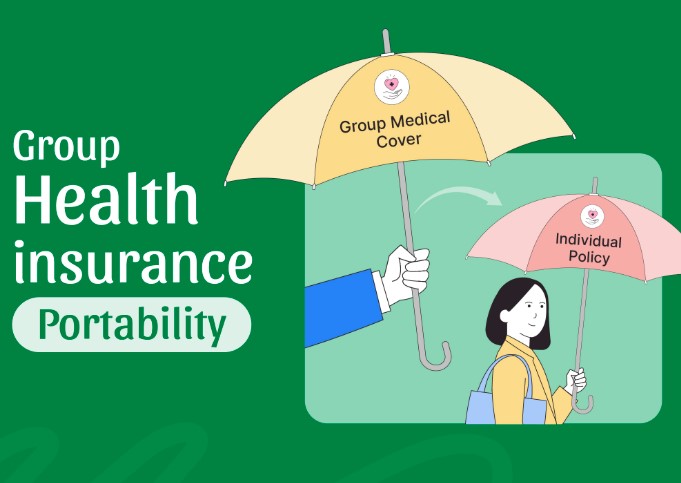Insurance-Do You Need Comprehensive or Third-Party Insurance? by 2025
Grasping the Different Types of Insurance
Insurance is an essential aspect of responsible vehicle ownership, offering financial protection against unexpected incidents. Understanding the different types of insurance is crucial for making an informed decision. Comprehensive and third-party insurance are the two primary forms of auto coverage, each catering to different needs and scenarios.
Comprehensive insurance provides extensive coverage, encompassing a wide range of potential risks. It includes protection not only against damage you might cause but also covers various other situations. For instance, comprehensive insurance covers incidents such as theft, vandalism, and damage from natural disasters like floods, hurricanes, or fires. Additionally, it covers damages to your vehicle resulting from non-collision incidents, such as hitting an animal or a tree falling on your car. This extensive protection makes comprehensive insurance a popular choice for many vehicle owners who want broader security.

On the other hand, third-party insurance focuses primarily on liability coverage. This type of insurance is designed to cover damages you might cause to another person’s vehicle or property in an accident where you are at fault. Third-party insurance ensures that you are financially protected from the potentially high costs associated with repairing another party’s vehicle or property. This type of coverage is usually required by law and offers a more economical option for drivers who might not need the extensive protection that comprehensive insurance provides.
Both types of insurance have their unique advantages and limitations. Comprehensive insurance offers a more all-encompassing safety net, covering a broader array of potential incidents. This makes it particularly valuable for owners of newer or more expensive vehicles, where repair and replacement costs can be substantial. However, the extensive coverage also means higher premiums, which might not be feasible for everyone.
Third-party insurance, while offering more limited protection, comes with the benefit of lower premiums. It serves as a cost-effective solution for those who drive older vehicles or have minimal risk factors, fulfilling legal requirements without the added expense of comprehensive coverage. This focused protection can be sufficient for many drivers, especially those looking to meet basic legal requirements while keeping costs manageable.
Understanding these differences allows vehicle owners to choose the type of insurance that best matches their specific needs, ensuring they are adequately protected without overspending.
Perks of Comprehensive Insurance
Comprehensive insurance offers extensive protection for your vehicle, addressing various risks that go beyond basic liability. One significant benefit is that it covers damage to your own vehicle. Whether you accidentally back into a pole or get caught in a hailstorm, comprehensive insurance steps in to cover the costs of repairs or replacements, providing a safeguard against unexpected repair bills.
Another advantage of comprehensive insurance is its coverage for theft and natural disasters. This type of insurance protects against scenarios like vehicle theft and vandalism, as well as damage from natural disasters such as floods, hurricanes, or fires. This wide-ranging protection ensures that you’re not left shouldering substantial costs in the event of such occurrences.
Additionally, comprehensive insurance extends its coverage to non-collision incidents. For instance, it can cover damages resulting from hitting an animal or a tree falling on your car. This feature adds another layer of security, protecting you from various unpredictable events that could otherwise result in significant financial strain.
The insurance also addresses vandalism and damage caused by falling objects. If your car is defaced or damaged by falling branches or debris, comprehensive insurance provides the necessary financial support for repairs. This aspect of the coverage helps alleviate concerns about parking your vehicle in public spaces or under trees, knowing that you’re financially protected.
Lastly, comprehensive insurance often includes coverage for windshield damage. Whether a small chip or a full crack, this insurance can help cover repair or replacement costs, keeping you safe on the road without a significant financial burden.
Benefits of Third-Party Insurance
Third-party insurance offers several key advantages, particularly for drivers looking for an economical solution.
One of the primary benefits is financial protection against liability. If you are at fault in an accident, third-party insurance covers the cost of repairs to the other party’s vehicle or property. This means you won’t have to pay out-of-pocket for these potentially high expenses, which can be a significant relief, especially in serious accidents where damages can quickly escalate.
Another advantage is the typically lower premiums associated with third-party insurance. Because this type of coverage is more limited and focuses solely on liability, it generally comes at a lower cost compared to comprehensive plans. This makes it a practical choice for drivers who are budget-conscious or who drive older vehicles that might not justify the higher premiums of more extensive coverage.
Additionally, third-party insurance is usually required by law. This legal requirement ensures that all drivers have a minimum level of coverage, which promotes financial responsibility and protects all parties on the road. Meeting this legal requirement with third-party insurance can help you avoid fines or penalties while still maintaining necessary coverage.
Third-party insurance also offers peace of mind for those who may not drive frequently or whose vehicles have lower market values. In such cases, investing in comprehensive insurance might seem unnecessary and overly costly. Third-party coverage provides a balanced approach, ensuring you meet legal obligations and have protection in place without incurring high costs.
For individuals who primarily drive in low-risk areas or who have a history of safe driving, third-party insurance can be particularly appealing. The lower premiums free up financial resources for other needs, making it a practical choice for many.
Considerations to Keep in Mind
When deciding between comprehensive and third-party insurance, it’s essential to consider several factors. First, think about the value and age of your vehicle. Newer or high-value vehicles often benefit more from comprehensive insurance due to the increased costs of repairs or replacements. On the other hand, older or less valuable vehicles may not justify the higher premiums of comprehensive coverage.
Next, examine your driving habits and environment. Consider how frequently and where you drive. If you often drive in high-traffic areas or regions prone to natural disasters, comprehensive insurance might offer more suitable protection. Conversely, if you primarily drive short distances in low-risk areas, third-party coverage could be sufficient.
Financial considerations also play a significant role. Analyze the premium differences between comprehensive and third-party insurance. Comprehensive insurance typically carries higher premiums due to its broader protection, while third-party coverage generally comes at a lower cost. Evaluate your budget to determine what you can afford. Additionally, assess potential out-of-pocket expenses in case of an accident or damage. Comprehensive coverage might reduce these costs, while third-party insurance could leave you responsible for damages to your own vehicle.
Another factor to consider is your personal comfort level with risk. If you prefer having extensive protection against a wide array of potential incidents, comprehensive insurance may be the better choice. However, if you are comfortable with more limited coverage and are primarily concerned with meeting legal requirements and protecting against liability, third-party insurance could be more appropriate.
Take into account any specific requirements or recommendations from your state or local laws, as some regions may have particular insurance mandates. Also, think about your future plans for your vehicle. If you intend to keep your car for many years, investing in comprehensive insurance might be more worthwhile.
Lastly, consider consulting with an insurance professional who can provide personalized advice based on your unique situation. They can help you navigate the nuances of each type of coverage and assist you in making an informed decision that aligns with your needs and financial capacity.
Comparing Costs
When comparing the costs of comprehensive and third-party insurance, it’s essential to consider multiple factors to determine which option fits your financial situation better. One of the most noticeable differences is the premium amount. Comprehensive insurance tends to have higher premiums because it provides a broader range of coverage. This extensive protection can lead to more expensive monthly or annual payments, but it also means you’re better safeguarded against various risks, including theft, natural disasters, and non-collision damages.
On the other hand, third-party insurance generally comes with lower premiums, making it a more affordable option for many drivers. This type of insurance primarily covers liability, meaning it pays for damages you might cause to another person’s vehicle or property. Because it offers more limited protection, the cost is typically lower than that of comprehensive plans. This makes third-party insurance a practical choice for budget-conscious individuals or those driving older vehicles that might not justify the higher cost of comprehensive coverage.
Another crucial factor to consider is the potential out-of-pocket expenses you might incur in the event of an accident or other incidents. Comprehensive insurance can significantly reduce these costs by covering a wider array of damages. For example, if your vehicle is damaged by a natural disaster, stolen, or vandalized, comprehensive coverage would handle the repair or replacement costs, sparing you from substantial financial strain. This aspect can be particularly beneficial for owners of high-value vehicles, where repair costs can be prohibitively high.
In contrast, while third-party insurance will cover damages to another party’s property or vehicle if you’re at fault in an accident, it won’t cover the cost of repairing your own vehicle. This means you would need to pay for those repairs out-of-pocket, which could be a significant expense depending on the extent of the damage. Drivers of older or less valuable vehicles might find this risk acceptable, especially if the vehicle’s market value is low and the potential repair costs are not substantial.
Additionally, when comparing costs, think about the frequency and environment of your driving. If you drive often or in high-risk areas, the higher premium of comprehensive insurance might be justified by the added protection it offers. Conversely, if you drive infrequently or in low-risk areas, third-party insurance might provide sufficient coverage at a lower cost.
By carefully examining these factors and understanding the financial implications of each type of insurance, you can make a more informed decision that aligns with your budget and coverage needs.
Choosing the Best Option
Choosing the best insurance option requires a thorough evaluation of your specific circumstances. Start by assessing your vehicle’s value and condition. If you own a newer or more expensive vehicle, comprehensive insurance might be the better option due to its extensive coverage, including protection against theft, vandalism, and natural disasters. Conversely, if your vehicle is older or has a lower market value, third-party insurance might suffice, as it covers liability without the higher premiums.
Next, consider your driving habits. If you frequently drive in high-traffic areas or regions with a higher risk of natural events, the broader coverage of comprehensive insurance could provide added peace of mind. For drivers who only use their vehicle occasionally or in low-risk areas, third-party insurance might offer adequate protection at a lower cost.
Financial capacity is another crucial factor. Comprehensive insurance generally has higher premiums, reflecting its extensive coverage. If your budget allows for these premiums, the added protection could be worthwhile. However, if you’re looking to save on insurance costs, third-party coverage offers a more economical solution while still meeting legal requirements.
Think about your risk tolerance as well. Comprehensive insurance provides extensive protection against a variety of incidents, reducing the potential out-of-pocket costs in case of an accident or damage. If minimizing financial risk is a priority for you, this might be the preferable option. On the other hand, if you’re comfortable with limited coverage and accepting the risk of potential repair costs for your own vehicle, third-party insurance could be more suitable.

It’s also important to factor in any legal requirements specific to your location. Some states have particular insurance mandates that could influence your decision. Ensuring that your chosen insurance meets these requirements is essential to avoid penalties.
Finally, seeking guidance from an insurance professional can be immensely helpful. An expert can provide tailored advice based on your unique situation, helping you understand the nuances of each type of coverage and assisting you in finding the most suitable option.
By carefully considering these factors and consulting with an insurance expert, you can make a well-informed decision that balances protection and affordability, ensuring you have the appropriate coverage for your needs.
